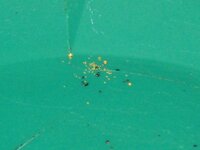Goldwasher
Gold Member
- May 26, 2009
- 6,077
- 13,225
- 🥇 Banner finds
- 1
- Detector(s) used
- SDC2300, Gold Bug 2 Burlap, fish oil, .35 gallons of water per minute.
- Primary Interest:
- All Treasure Hunting
the grease will literally help the fine gold through the system...Theres a reason a wash plant operator will lose their mind if all of a sudden they notice a bearing seal leaking grease into a sluice run
just sayin'
just sayin'




 ? is to creat a sticky bed not a floating oily film.
? is to creat a sticky bed not a floating oily film.





